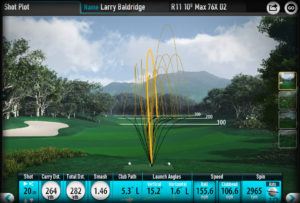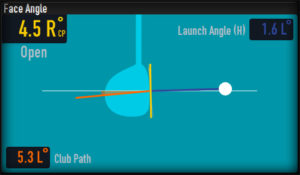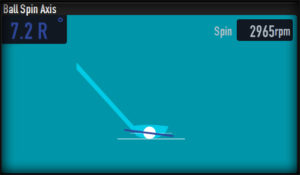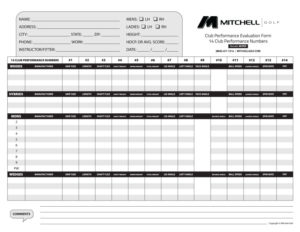Founder/Chairman
Mitchell Golf Equipment Company
You have probably heard the words “Tilt Axis Spin”, especially if you have purchased a launch monitor recently. What is “Tilt Axis Spin”? Launch monitor manufacturers define it as the angle deviation off horizontal at which the ball leaves the clubface. It is now known that the ball does not spin in two directions: backwards and sideways. The ball only spins backwards on its vertical axis relative to the clubface attitude. The ball is deflected 90° to the direction of the face attitude.
Tilt Axis Spin has sparked a new debate among golf instructors and club fitters regarding what makes the ball start on its initial flight path. It has long been acknowledged that face angle and club path are the determining factors as stated in the Ball Flight Laws published in the PGA Teaching Manual. It’s become a debate among golf instructors that was caused by a launch monitor manufacturer’s interpretation of the ball flight laws and the awareness about the D-Plane concept developed by Theodore Jorgenson, which he writes about in his book The Physics Of Golf.
It was even suggested by some that the original Ball Flight Laws authored by Dr. Gary Wiren, PGA Master Professional in the PGA Teaching Manual are wrong, especially Laws number 3 and 4 pertaining to Path and Face.
Ball Flight Law 3 states: “Path – The direction of the arc described by the club head in its travel away from and then back toward the target. Its line of travel at impact is one of the primary factors influencing direction for a full shot.”
Ball Flight Law 4 states: “Face – The degree at which the leading edge of the club’s face is at right angles to the swing path. It will determine the accuracy of the ball’s flight along that line, or produce a left or right curve away from that line.”
Dr. Wiren further explained in his Principle #14: “Impact – There is only one moment of truth in the swing. Impact! The club face must be squared at this moment while the path is to the target if the ball is to travel there. It is the moment when the maximum speed should be reached and the center of the club face is contacting the ball from the desired angle.”
What we have is a description that if the club face is square to the target line and the club is moving on a path toward the target at the moment of impact the ball will start on the target line, thus a vertical spin axis. However, if the face attitude (lie angle) is not horizontal at the moment of impact, the ball will start on a spin axis 90° to the angle of the clubface attitude.
The Ball Flight Laws are correct. But the definition of a squared clubface at the moment of impact is critical to explaining what influences ball flight.
Launch monitors attempt to provide this data by stating the deviation off horizontal that the ball starts by correlating it with ONLY the face angle and club path, which most launch monitor manufacturers claim they measure. This data is reported in degrees usually with a horizontal reference line.

It has been questioned whether or not launch monitors actually measure club head movement. Some suggest that launch monitors examine the initial ball data and make club head calculations accordingly.
Regardless, launch monitors just report the path the club head is traveling and the relationship of an open, square or closed face angle of the club head to the target line and the club path at impact.
This data is representative of Ball Flight Laws 3 & 4.


However, this data omits a critical element in explaining what creates ball flight path: Club Face Attitude. Launch monitors do not report Club Face Attitude, which is known by club fitters to be the result of lie angle variation at impact. If the Club Face Attitude is properly aligned (horizontal) the ball will start straight when the club face and club path are moving toward the target at impact. For a right-hand golfer the ball will start left if the Club Face Attitude is aligned upright and right if aligned flat when struck with the club face and club path moving toward the target at impact. If the Club Face Attitude is not horizontal and the club face and club path are moving in a direction different then toward the target at impact, the tilt axis spin will be tilted even more off the vertical axis.
Club Face Attitude must be included in the definition of the Ball Flight Laws and Principles if the face is to be “squared” at impact. The two dimensional reporting of launch monitors do not tell the whole story of what causes the ball to start on its flight path. Club Face Attitude is a third dimension that needs to be considered when fitting club specifications. Also don’t exclude gear effect from metal woods when fitting. Clubface impact point is a very important factor when comparing launch monitor data.

In conclusion, launch monitor data is good comparative data to work with for club fitting. The real test of fitting is comparing data of clubs with varying specifications. The club performance specification numbers of different clubs should be recorded on a club performance specification form. Once that is done then compare the findings to the launch monitor data of each club. Club fitters can then recommend the best fit for their golfers.
